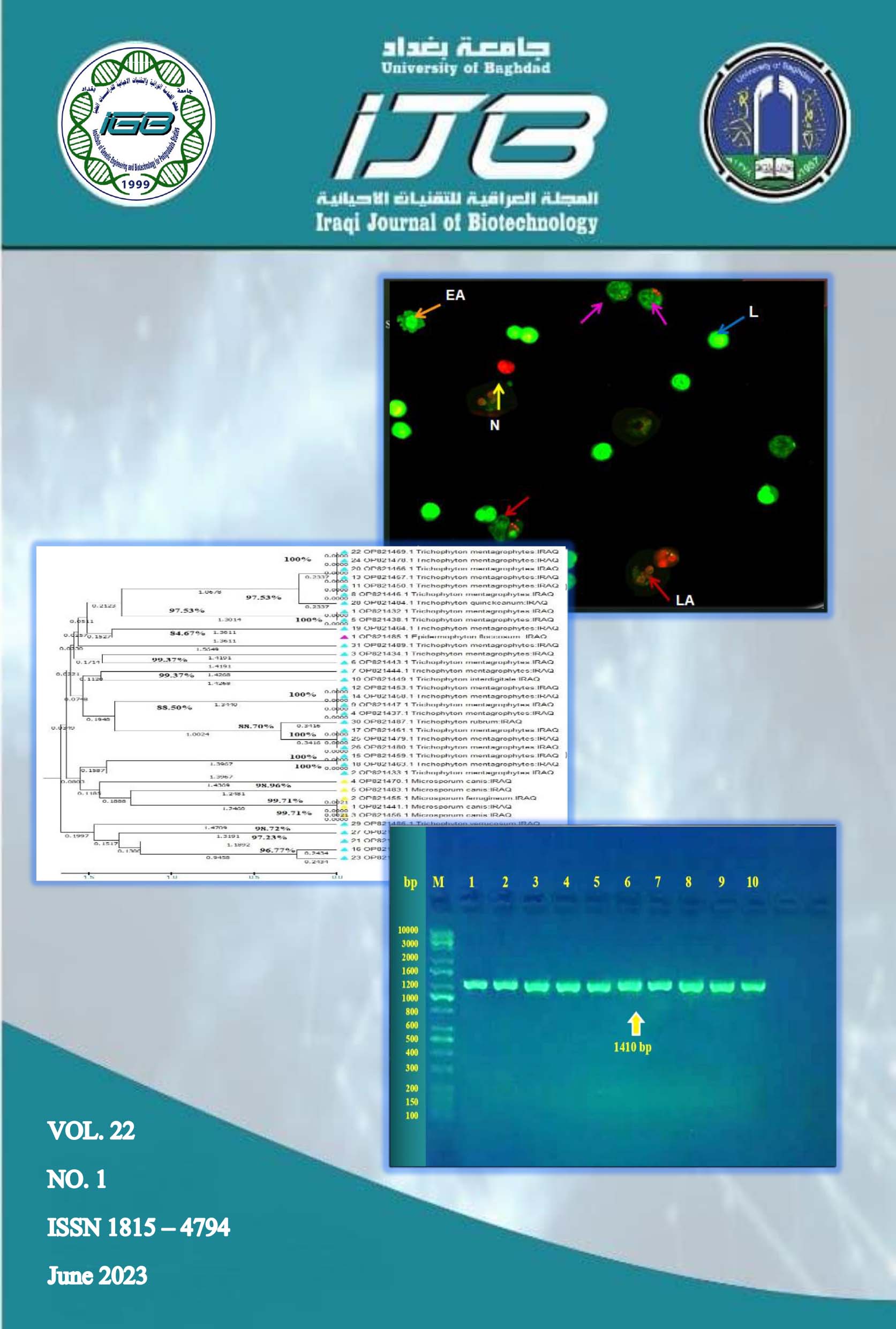Molecular Identification of Tinea spp. Causing Tinea Disease using ITS Sequencing Analysis
Abstract
Tinea is a group of keratinophilic fungal infections caused by dermatophytes that invade the skin, hair, and nails. As the conventional methods for dermatophytes detection are time-consuming or lack enough specificity, accurate diagnostic methods such as molecular techniques are required for precise identification and differentiate between two closely related species of dermatophytes. To disclose the useful role of DNA sequencing in the recognition of dermatophytes using the ITS region and comparing the current local isolates with those provided by the NCBI. The study aims to diagnose the dermatophyte isolates causing ring worm diseases using the inter transcribed spacer (ITS) region and find its phylogenetic analysis. one hundred ten (skin scraping, hair clippings and nails) samples were gathered from patients with dermatophytosis. All specimens were being microscopically inspected and then cultured on sabouraud's dextrose agar (SDA) with cycloheximide, PCR with ITS1 and ITS4 primers was used to confirm the positive dermatophytes' cultures. The PCR results were sequenced, and the rRNA database was used to do analysis on the sequences and verify the homogenic data of the microorganisms (NCBI). Substitutions in ribosomal RNA gene were found 37 isolates from dermatophytes and 8 isolates of them contained variations of the percentage of conformity with the gene bank 99% and they were registered with the gene bank and wrote down the new code that was registered in the table and in front of the heterogeneous sample. Trichophyton mentagraphytes recorded the highest frequency from cases. Trichophyton simii recorded the highest genetic several transitions, transversion, deletion, and insertion mutation when compared to other globally known. The phylogenic trees showed clear genetic interfere. It was concluded, demonstrate that the ITS region developed in this study can be used for detecting the Microsporum, Trichophyton, and Epidermophyton.


